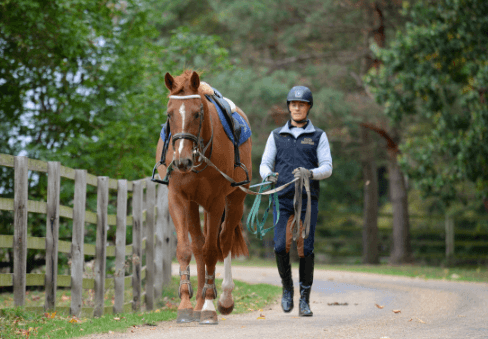How can I train my horse for reining?

Reining, a western riding competition that showcases a horse’s athleticism and agility, is akin to ballet on horseback. Training a horse for reining involves teaching specific maneuvers such as spins, sliding stops, and flying lead changes. This guide will take you through the fundamental steps to train your horse for reining.
Understanding Reining
Before diving into training, it’s important to understand what reining entails. Reining tests the horse’s ability to perform a precise set of movements with smoothness and finesse, typically guided by minimal cues from the rider.
Key Movements in Reining:
- Circles: Large fast and small slow circles.
- Spins: Rapid, in-place turns over the hindquarters.
- Sliding Stops: Halting abruptly from a gallop, sliding on the hind feet.
- Rollbacks: 180-degree turns after a stop.
- Lead Changes: Changing the leading leg at a gallop.
Preparing Your Horse for Reining
1. Start with the Basics
Begin with fundamental groundwork to establish obedience and responsiveness.
Ensure your horse is comfortable with basic commands such as stop, go, and turn.
2. Build a Solid Foundation
Focus on creating a strong bond and understanding between you and your horse.
Develop your horse’s balance, strength, and flexibility, as these are crucial for reining maneuvers.
3. Introduce Reining Movements Gradually
Start with simpler movements like small circles and progress to more complex ones like spins and sliding stops.
Be patient and consistent. Reining requires precision, which takes time to develop.
Training Techniques
1. Teaching the Spin
Begin by teaching your horse to pivot on its hindquarters. Reward small increments of turning.
Gradually increase the speed and number of rotations as your horse becomes more comfortable.
2. Mastering the Sliding Stop
Start with regular stops, then gradually introduce the slide. Begin on softer ground to make it easier for your horse.
Use verbal cues and a consistent hand position to signal the stop.
3. Perfecting Rollbacks and Lead Changes
For rollbacks, practice 180-degree turns after a stop. Ensure smoothness and fluidity in the motion.
Flying lead changes require coordination and balance. Practice on straight lines before integrating them into circles.
4. Circle Work
Practice varying the size and speed of circles. Focus on maintaining a consistent gait and smooth transitions.
Tips for Effective Training
1. Consistency is Key
Maintain a regular training schedule and be consistent with cues and commands.
2. Patience and Positive Reinforcement
Reward your horse for correct responses. Avoid getting frustrated if progress is slow.
3. Health and Fitness
Keep your horse in top physical condition. This includes proper nutrition, regular veterinary care, and adequate exercise.
4. Seek Professional Guidance
Consider working with a reining coach or trainer, especially if you are new to the sport.
Conclusion
Training a horse for reining is a journey that requires time, patience, and dedication. By building a strong foundation, introducing movements gradually, and focusing on consistency and positive reinforcement, you can develop a reining horse that moves with the precision and grace that the sport demands. Remember, the bond and trust between you and your horse are as crucial as the physical training.






